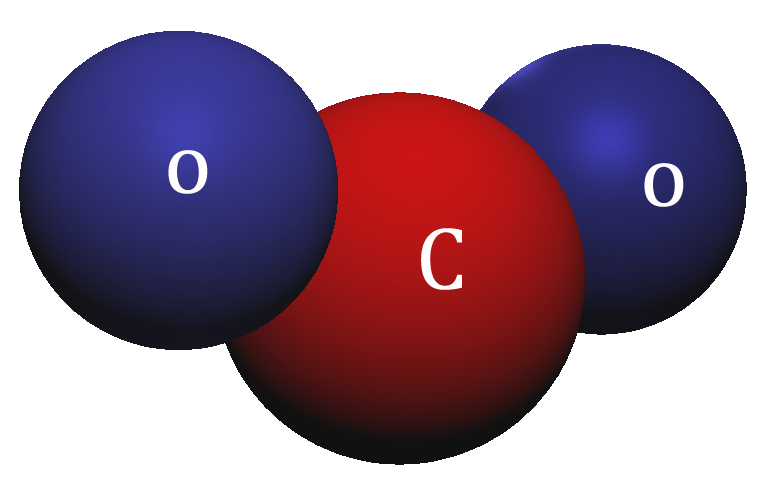Three hundred and fifty, what does it mean to you?
Unless you follow a few campaigns or are well-informed when it comes to carbon dioxide levels, it's unlikely you know what I'm referring to. Prepare to be enlightened!
Three hundred and fifty is a measurement, a measurement in parts-per-million (ppm). 350 of what? Carbon dioxide concentration in parts-per-million.
What is Parts-Per-Million?
- Parts-per notation measures concentration and means 'out of a million', usually used for measuring the volume of a gas, weight of a liquid or solid, or by parts of air or liquid.
Why is the concentration of CO2 so important? Why not Methane?
- Carbon dioxide is the one gas we produce, anthropogenically (unnaturally). This is due to the fact that carbon is abundant in our fossil fuel sources, and is one of the most abundant elements in our galaxy (estimated spectroscopically) with only Hydrogen, Helium and Oxygen being more abundant. Humans are 18% carbon by mass, thus, when we and many other plants and animals decompose, carbon is returned to the Earth and it's why when raw fuels, wood, etc, is burned CO2 is released.
- Remember that plants also absorb CO2 during photosynthesis, massive amounts of it, 20% of our total annual emissions are absorbed by tropical forests alone - not including pine forests. That's the equivalent of 4.8 billion tonnes of CO2 emissions, each year. Source Thus, if we remove forests, not only do we release CO2 during the deforestation, but on average 1,000 kg of CO2 is not absorbded by each tree once it's cut down - removing 1,000 trees will mean 1 million kg of CO2 will not be absorbed each year.
What is the current concentration of CO2 in the atmosphere, in parts per million?
- Measured at the Mauna Loa Observatory in Hawaii, at current concentration of CO2 is 391.06 ppm, as of March 2010. That is, in Earth's entire atmsophere for every million parts, 391 are CO2 (presumable molecules). That doesn't sound like much, right? Read on.
Why is 350 ppm so important?
- 350 parts per million is the level of Carbon Dioxide, which most scientists and climate experts agree, is the highest sustainable level at which we can live with the Earth's climate remaining stable - i.e. global warming remains in it's natural state, thus, any climate change will be natural.
When did the concentration rise above 350ppm?
- 1987.
What was the concentration pre-industrialisation?
- 275ppm of CO2, as it was for all of human history
If 391ppm is the current concentration, how much is 391ppm?
- The atmosphere has a mass of about five quintillion (5x1018) kg, three quarters of which is within about 11 km (6.8 mi; 36,000 ft) of the surface.
- CO2 at 387ppm (mid 2008 concentration) makes up 3.02188 x 10^12 kg, or 3.02188 trillion kg. This is an increase from 2.996 trillion kg, which is 2.588 billion kg more atmospheric CO2 in 2008, than in 2006.
How do we know what the concentration was thousands of years ago?
- Trapped in the deepest ice of the Antarctic, specifically the Eastern Antarctic Ice Shelf, the thickest ice on the planet, are air bubbles from thousands of years ago. By analysing the air bubbles in the deepest ice scientists can determine the concentration of gases in the atmosphere at the time when that very thin layer of ice was exposed at the surface. This is the most accurate way of measuring ancient atmopsheric compositions.
What if the CO2 concentrations keep increasing?
- The more CO2 there is the atmosphere, the more molecules of CO2 in the atmosphere, resulting in more UV radiation from the sun being absorbed and re-radiated back to the surface of the Earth instead of escaping into space, thus, trapping more of the sun's UV radiation inside the Earth's atmosphere and warming the planet - global warming. This global warming will cause changes in weather patterns which, if sustained over more than 30 years, is considered to be climate change.
If you are interested in learning more, or supporting the campaign called "350", visit the 350.org website, and connect on Twitter, Facebook, Flickr, and/or YouTube.
What do you think? How important is the number 350 in this context?
Thank you for reading!






2 comments:
A very interesting article, and so is your whole blog. For this work you deserve more attention.
Thank you for the recognition, I appreciate it. I'm glad you found the content of my blog interesting!
Post a Comment